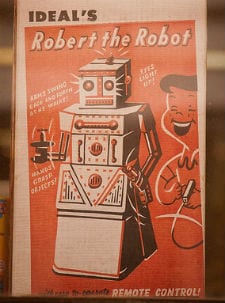 Take a quick stroll through the home appliance section of your local Sears, and you’ll be bombarded by major appliances that boast some sort of computer chip embedded inside, aimed at making your home “smarter,” more efficient, and more connected. We’ve written about a number of these smart devices before — from refrigerators to thermostats — and what they mean for consumers, as well as the ways they’re changing the way service technicians, installers, and repairmen do their jobs.
Take a quick stroll through the home appliance section of your local Sears, and you’ll be bombarded by major appliances that boast some sort of computer chip embedded inside, aimed at making your home “smarter,” more efficient, and more connected. We’ve written about a number of these smart devices before — from refrigerators to thermostats — and what they mean for consumers, as well as the ways they’re changing the way service technicians, installers, and repairmen do their jobs.
So while it seems, anecdotally, like “smart” products are beginning to transform people’s homes, it turns out that not everyone’s entirely convinced that the entirely connected, maximally efficient, smart home is ready to be a reality.
A new survey from the Pew Research Center revealed that people are split almost 50/50 on whether the “smart” home will be a reality by 2020. Forty-six percent of the 1,021 respondents, described as “technology stakeholders and critics,” thought that efforts to embed IP-enabled devices in consumers’ homes to create a “Home of the Future” would fail, and that homes in 2020 will look and act a lot like they do in 2012. Just over half — 51 percent — were confident smart systems will be a reality within the decade.
“Smart” appliances and systems, it should be noted, already exist in some pretty major ways, from vast rollouts of “smart” energy grids to mobile apps that allow users to control the air conditioner, stereo, or lights with a cell phone. However most of those systems work separately, and using proprietary language, meaning that a totally connected home is still a thing of the future.
Among the more pessimistic segment, the more frequently cited obstacles to the fully interconnected home were high costs, necessary infrastructure changes, and customer’s general apathy toward transforming their homes in such a way.
“Nobody really wants a smart home — they like their homes to be dumb,” said Tracy Rolling, a product user-experience evangelist for Nokia, in a release accompanying the survey. “My iPhone won’t want to talk to my G.E. smart toaster and my Bosch smart refrigerator won’t connect to my generic smart coffee maker. … How many people do you know who have bought one of those alarm-clock coffee pots, loved them for a month, and then stopped using the alarm-clock feature all together? Smart homes are like that on a grand scale.”
Cost was also a key concern.
“We should be much farther along with this than we are, but one reason we are not is expense, another reason is difficulty of use, and yet another reason is difficulty in gaining public understanding of the cost versus benefit of making and implementing smarter in-home devices and systems,” wrote Steve Jones, a professor and a founding leader of the Association of Internet Researchers.
Smart, connected appliances hold some significant promise for service technicians, as the ability to remotely tap into data in the field — whether it’s a diagnostic report from someone’s fridge or an automated service request from an HVAC unit — is transforming the way crews dispatch techs to perform repairs, and how the repairs themselves are done.
But if popular sentiment is any indication, it appears that promise may remain just that — a promise.
More: G.E. Exploiting OEMs’ Advantage With New Program.
Click here to download a free whitepaper, “Five Steps to Make Field Service Profitable.”

Share this: